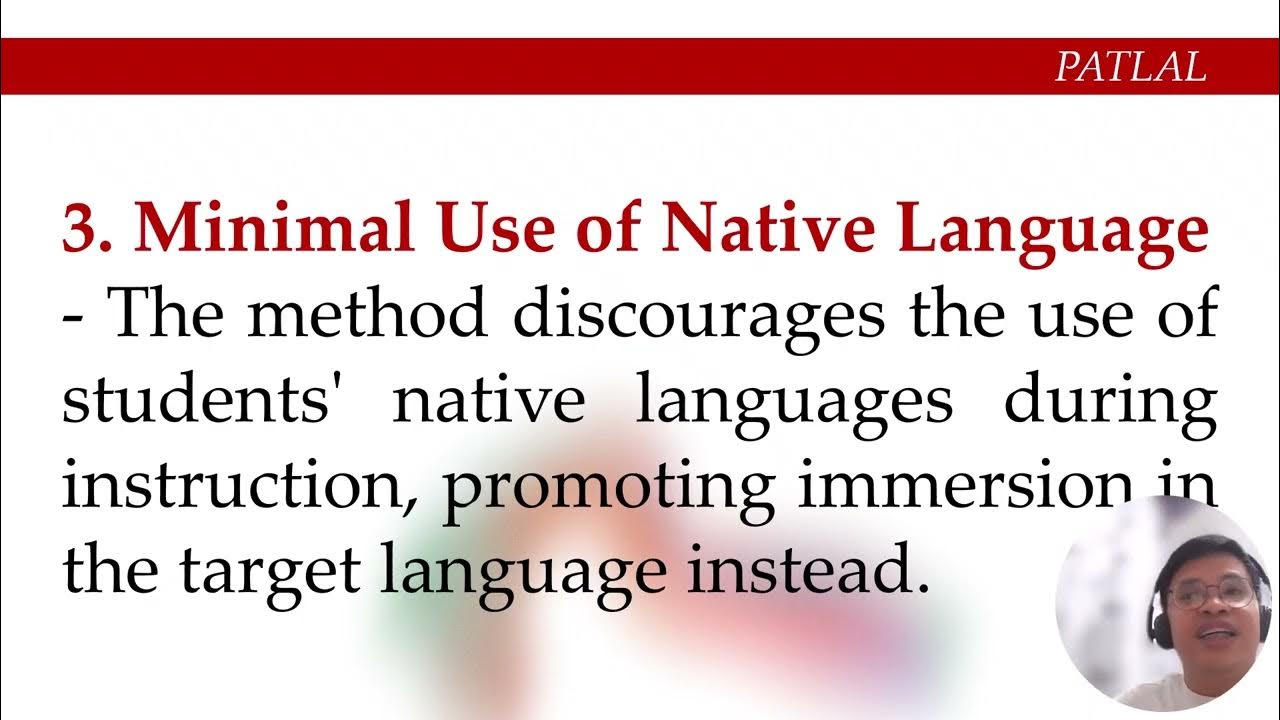Language teaching methods: a timeline
Summary
TLDRThis language teaching methodology course introduces various historical methods of language instruction, from the 17th-century inductive approach of Comenius to the 20th-century's audiolingualism and communicative language teaching. It also covers innovative methods like Task-Based Language Teaching (TBLT) and Content and Language Integrated Learning (CLIL), highlighting the evolution from grammar translation to a focus on communication and real-world application.
Takeaways
- 📚 Language teaching became a formal profession in the 20th century, with many methods developed to enhance teaching effectiveness.
- 👨🏫 Johan Comenius, a Czech scholar, introduced an inductive approach to language teaching in the 17th century, focusing on imitation and practical language use over grammar rules.
- 📖 The 19th century saw a return to the grammar-translation method, emphasizing grammar study and text translation for reading classical literature.
- 🗣️ The direct method emerged in the late 19th century, focusing on teaching in the target language through listening and speaking practice.
- 🔊 The audiolingual method of the 1950s was based on behaviorism, using drills and repetition to form new language habits.
- 💬 Communicative language teaching arose in the 1970s-80s, prioritizing language use for communication over grammatical accuracy.
- 🧠 Total Physical Response (TPR) appeared in the 1970s, using body movements to reinforce language learning through physical response.
- 🫶 Humanistic language teaching in the 1970s-80s, with methods like the Silent Way, Suggestopedia, and Community Language Learning, emphasized emotional well-being and learner autonomy.
- 📝 Task-Based Language Teaching (TBLT) focuses on language learning through task completion, emphasizing functional success over language accuracy.
- 🗨️ Innovative methods like Dogme (teaching without textbooks) and CLIL (integrating content and language learning) have gained popularity in recent years.
Q & A
What is the main focus of the language teaching methodology course?
-The course focuses on discussing various methods in language teaching and provides a historical timeline of these methods.
When did language teaching become established as a profession?
-Language teaching became established as a profession in the 20th century.
Who was a key influence in language teaching before the 20th century?
-Johann Comenius, a Czech scholar and teacher, was a key influence in language teaching before the 20th century.
What was Comenius' approach to language teaching?
-Comenius introduced an inductive approach, focusing on teaching students to use the language through imitation and association, rather than teaching rules and analysis.
What characterized language teaching in the 19th century?
-The 19th century was characterized by the grammar-translation approach, which focused on studying grammar and translating texts to learn to read literature.
What was the direct method in language teaching?
-The direct method, introduced in the late 19th century, involved teaching exclusively in the foreign language, focusing on speaking and listening to make learning more naturalistic.
What is the audiolingual method and when was it introduced?
-The audiolingual method, introduced in the 1950s, was based on behaviorism and involved repetitive drills to form new habits in language use.
What is communicative language teaching and when did it emerge?
-Communicative language teaching emerged in the 1970s and 80s, focusing on actual communication in the target language to achieve the goal of language teaching.
What is Total Physical Response (TPR) and how does it work?
-Total Physical Response (TPR) is a method where the teacher gives commands with body movements, and students respond by imitating these movements.
What are the three key methods associated with humanistic language teaching in the 1970s and 80s?
-The three key methods associated with humanistic language teaching are The Silent Way, Suggestopedia, and Community Language Learning.
How does Task-Based Language Teaching (TBLT) differ from other methods?
-Task-Based Language Teaching (TBLT) focuses on students learning language by completing tasks, with assessment based on task completion rather than the language used to do so.
What is the Dogme method and what does it encourage?
-The Dogme method encourages teaching without textbooks and focuses on the language that emerges from conversation.
What is CLIL and how does it integrate language learning?
-CLIL, or Content and Language Integrated Learning, teaches curriculum content and foreign languages together, integrating language learning with subject matter.
Outlines

このセクションは有料ユーザー限定です。 アクセスするには、アップグレードをお願いします。
今すぐアップグレードMindmap

このセクションは有料ユーザー限定です。 アクセスするには、アップグレードをお願いします。
今すぐアップグレードKeywords

このセクションは有料ユーザー限定です。 アクセスするには、アップグレードをお願いします。
今すぐアップグレードHighlights

このセクションは有料ユーザー限定です。 アクセスするには、アップグレードをお願いします。
今すぐアップグレードTranscripts

このセクションは有料ユーザー限定です。 アクセスするには、アップグレードをお願いします。
今すぐアップグレード5.0 / 5 (0 votes)






